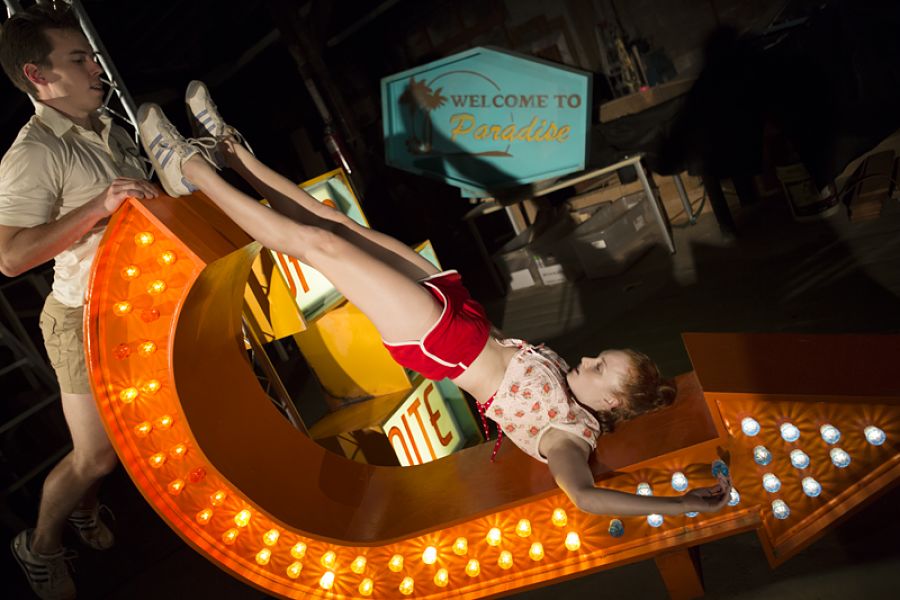“Writing about music is like dancing about architecture,” goes a famous if hard-to-source quote (it’s often attributed to comedian Martin Mull, though I first saw it in an interview with Elvis Costello). It’s meant to dismiss or deflate the notion that music criticism has much weight, as if to verbalize interpretations of a nonverbal art form is to fundamentally miss the point. Not only do I reject that such an endeavor is impossible or valueless, let alone misses “the” point (as if there could be just one point to music). I also find that the quote’s purportedly absurd analogy, the “dancing about architecture” bit, undercuts itself. Some of the best dancing I’ve seen has been about architecture.
I’m being half-coy, since by “about” I partly mean that I’ve seen a number of site-specific dance/theatre productions choreographed around the architectural features of the sites in question, from Sleep No More’s eerie McKittrick Hotel in New York City to a memorable piece called Sleeping With the Ambassador, staged in 2003 within the then-crumbling, now-razed Ambassador Hotel in Los Angeles by the great Heidi Duckler Dance Theatre (then called Collage Dance Theatre). As space is a subject of every dance, much as time is a condition of all music, it’s not a stretch to think of site-specific dance as dealing thematically with the place where it’s staged in more than an incidental way.
This was certainly the case with the ambitious promenade of Sleeping With the Ambassador, which brought us in the old hotel’s back entrance, through a palatial lobby, down through an underground shopping area (though not into the legendary secret tunnels through which Marilyn Monroe was reportedly escorted for assignations with Jack Kennedy), and into the spectral shell of the Cocoanut Grove nightclub. Throughout the piece, the dancers had an inevitably ghostly affect, as if they were erstwhile guests stranded in a purgatory we were lucky simply to pass through; at the same time, they also had disconcertingly flesh-and-blood sinew and presence. It was hard, in short, not to experience the dance as a reflection on the structure itself, a contemplation of how we take up space, of human effort haunted by entropy (or was that vice versa?).
In this issue of American Theatre, we have a number of pieces about the Venn diagram–like intersection of dance and theatre, starting with the unique case study of Mikhail Baryshnikov, a generation- and genre-straddling figure who some time ago embarked on a new career (we couldn’t call it a “second” career, as he’s had so many iterations and interests over the decades since he began in Russian ballet) as a kind of latter-day actor-manager, running a New York arts center with his name on it and performing in dance/theatre pieces that use his extraordinary instrument in new ways. There’s also a trendlet we’ve noted here, in which dance companies are collaborating with U.S. resident theatres to create pieces that are neither simply dance nor simply theatre—not that there’s anything simple about either.
The complexities and possibilities of this hybrid have few better current exemplars than Third Rail Projects, who’ve been commissioned by Denver Center Theatre Company to create a piece employing dance in a site-specific setting there. Best known for their Alice in Wonderland–themed immersive piece, Then She Fell, staged in dilapidated Brooklyn sites, Third Rail recently opened another sumptuous space/time warp called The Grand Paradise, for which they’ve transformed a Bushwick warehouse into a louche, tropical ’70s limbo. As we move through the show’s sculpted but open-ended experiences, we witness a lot of first-rate dance in unlikely spaces—and, in moving from room to room, implicitly join the dance ourselves. One thing we can see clearly after the haze clears is that the lines between audience and performer, let alone between dance and theatre, are drawn in sand.


